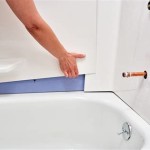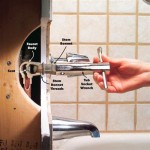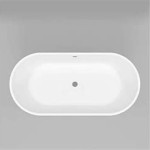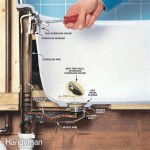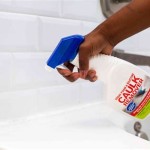How to Repair a Metal Bathtub
Metal bathtubs, known for their durability and classic aesthetic, can suffer damage over time. Rust, chips, and cracks can detract from their appearance and even compromise their functionality. Fortunately, many of these issues can be addressed with DIY repairs, saving the cost of professional intervention or a full bathtub replacement. This article will guide you through the process of repairing common metal bathtub problems.
Assessing the Damage
Before starting any repair, carefully assess the type and extent of the damage. This assessment dictates the appropriate repair method and necessary materials. Different repair kits are formulated for specific materials and damage types. Common damage includes:
- Small chips and scratches
- Rust spots and stains
- Cracks and larger holes
- Damaged or worn porcelain coating (for porcelain-enameled steel tubs)
Gathering the Necessary Tools and Materials
Having the right tools and materials at hand ensures a smooth and efficient repair process. Common items required include:
- Cleaning supplies (e.g., abrasive cleaner, bleach, degreaser)
- Sandpaper (various grits)
- Masking tape and drop cloths
- Putty knife
- Repair epoxy or filler specific to the damage and bathtub material
- Rubber gloves and safety glasses
- Paint (for porcelain-enameled steel tubs) and appropriate applicator (brush or spray paint)
Repairing Chips and Scratches
Minor chips and scratches are often easily repaired with a bathtub repair kit. These kits typically contain an epoxy filler that is color-matched to common bathtub finishes.
- Clean the damaged area thoroughly with an abrasive cleaner and degreaser.
- Sand the area lightly with fine-grit sandpaper to create a surface for the epoxy to adhere to.
- Apply the epoxy filler according to the manufacturer’s instructions, ensuring a smooth and even finish.
- Allow the epoxy to dry and cure completely before using the bathtub.
Addressing Rust Spots and Stains
Rust can be a persistent problem in metal bathtubs. Addressing it quickly prevents further corrosion. Several methods can be used to remove rust:
- Commercial rust removers: These are available in various forms, such as gels and liquids. Follow the manufacturer's instructions carefully.
- Homemade rust remover: A paste of baking soda and water can be applied to rust stains and left for a few hours before scrubbing.
- Sanding: For more stubborn rust, sanding with progressively finer grits of sandpaper can be effective.
After removing the rust, rinse the area thoroughly and dry it. A rust-inhibiting primer can be applied before repainting (if necessary) to prevent recurrence.
Repairing Cracks and Larger Holes
Larger cracks and holes require more substantial repair. While minor cracks can sometimes be addressed with epoxy fillers, larger damage may necessitate fiberglass patching.
- Clean and dry the area thoroughly.
- If using epoxy filler, apply it in thin layers, allowing each layer to dry completely before applying the next.
- For fiberglass patching, cut a fiberglass patch slightly larger than the damaged area. Apply epoxy resin to the patch and the damaged area, then apply the patch. Smooth out any wrinkles or air bubbles.
- Once the epoxy or fiberglass patch has cured, sand the area smooth and then repaint if necessary.
Restoring a Porcelain Finish
Porcelain-enameled steel tubs can chip, revealing the underlying steel. These chips are not only unsightly but also susceptible to rust. Repairing them requires a slightly different approach:
- Clean the chipped area thoroughly.
- Apply a porcelain repair kit, following the manufacturer's instructions. These kits often contain a two-part epoxy that is designed to match the porcelain finish.
- After the epoxy has cured, sand it smooth and blend it with the surrounding porcelain.
- Touch-up paint can be used to further blend the repair if necessary.
Preventing Future Damage
Taking preventative measures can help prolong the lifespan of a metal bathtub and minimize the need for future repairs.
- Avoid using abrasive cleaners that can scratch the surface.
- Use a bath mat to prevent slips and falls that could chip the porcelain or enamel.
- Repair any chips or scratches promptly to prevent rust from developing.
- Ensure adequate ventilation in the bathroom to minimize moisture buildup, which can contribute to rust.

How To Repair A Rusty Hole In Your Steel Bathtub

How To Repair A Rusted Bathtub Happy Tubs

Re A Cast Iron Bath Tub Enamel Rer Kit Diy Know How

How To Refinish An Old Clawfoot Bath Tub

How To Refurbish A Cast Iron Tub This Old House

Fix Rusted Holes In Iron Bathtub Silicon Valley Living

How To Repair An Enamel Bathtub Hunker

Bathtub Repair Virginia Refinishing Re Glazing

How To Refinish An Old Clawfoot Bath Tub

How To Remove A Steel Bathtub


